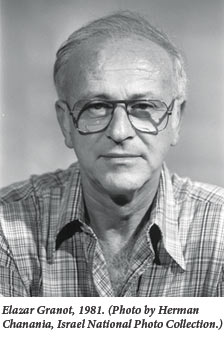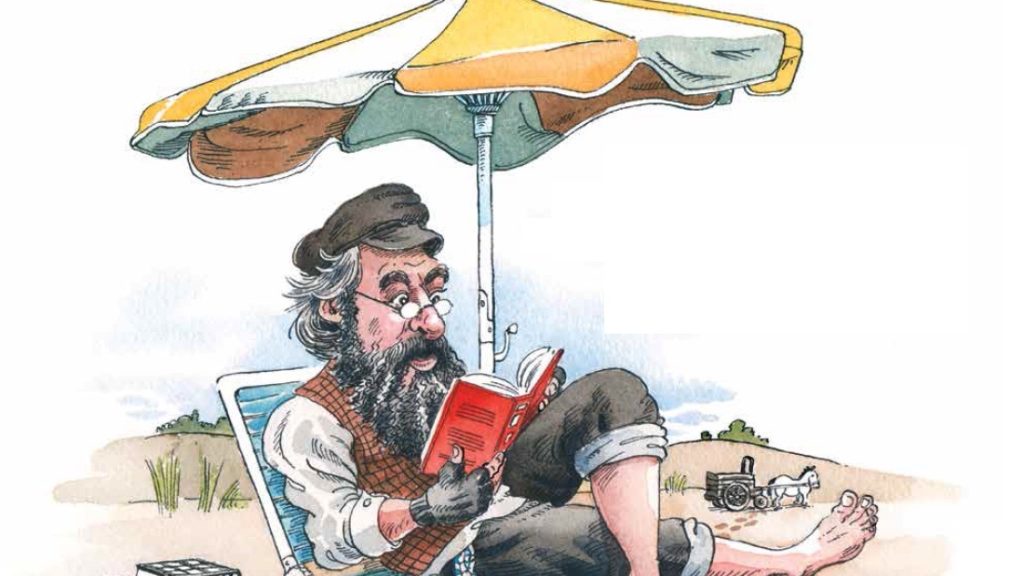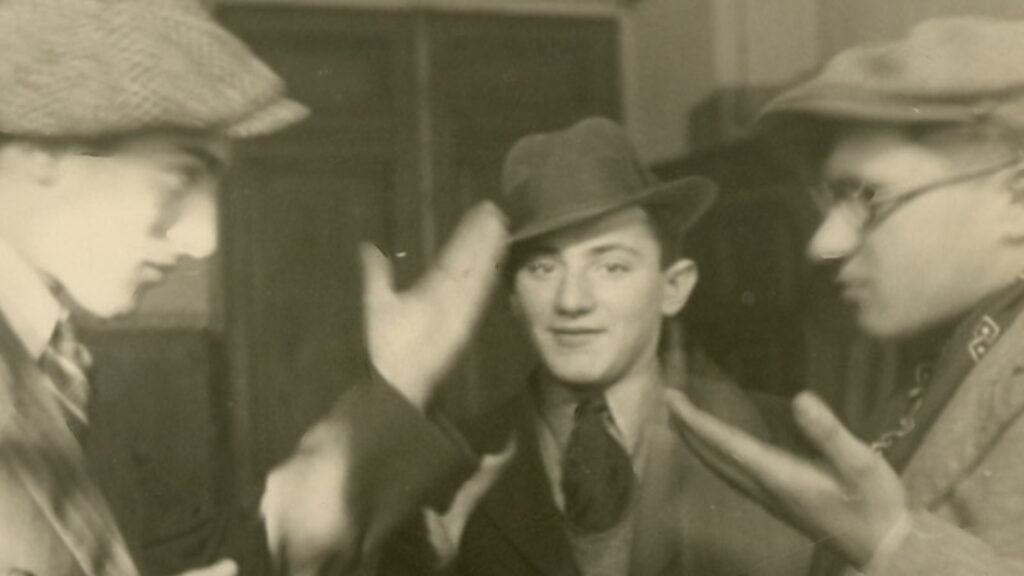Dirty Hands in Difficult Times
Arthur Goldreich was an undercover ANC operative and close collaborator of Nelson Mandela until he was caught and imprisoned by the South African government in 1963. He soon escaped custody and fled to Israel, where he remained a vocal opponent of apartheid. In 1976, when South African Prime Minister John Vorster made his first visit to the Jewish state, Goldreich took action. Among other things, he plastered telephone poles in Jerusalem with posters juxtaposing Vorster’s name with swastikas. While he was busy doing this, a Holocaust survivor with a number tattooed on his arm approached him, angrily spat on one of the posters, and proclaimed, “We will make agreements with the devil to save Jews from persecution and to secure the future of this state.” Goldreich, Sasha Polakow-Suransky informs us, was left speechless.
Who knew better, Goldreich or the anonymous survivor? Polakow-Suransky unmistakably identifies more with the former’s fully justified moral indignation than with the latter’s cold and amoral realism. But he does not rush to judgment. While he provides abundant proof of what he surely sees as Israel’s deplorable closeness to apartheid-era South Africa, he also supplies no small amount of evidence that its leaders acted consistently with their country’s best interests when they chose in this case to “deal with the devil.” His book ends on a surprisingly ambiguous note. Instead of voicing a clear opinion regarding how Israel should have handled the morally charged political choices it faced in dealing with South Africa, he changes the subject from Israel’s relation to the apartheid regime to what he supposes to be its growing resemblance to it. Just why he does this is not entirely clear.
A young scholar with impressive academic and professional credentials, Polakow-Suransky is very much in tune with the times. His book is primarily an account of the Israel-South Africa relationship from the late 1960s to the late 1980s, yet he tries to establish the overall context of this political story by offering his own brief history of the political realities of post-independence Israel. In doing so, he relies on Avi Shlaim and other “new historians” for his basic scheme of things. If anything, he goes even further than his mentors in offering a simplistic, one-sided history that saddles Israel with all the blame for everything that has gone wrong. His summary of Israel’s relations with its neighbors in the mid-1950s, for instance, focuses mostly on Israeli actions and lists only two relatively small Arab provocations: the seizure of an Israeli ship that attempted to pass through the Suez Canal and the murder of two Israelis in January 1955 by Jordanians who had sneaked across the border. Of the years of murderous fedayeen raids into Israeli territory, of Nasser’s anti-Israel incitement and his massive arms deal with the Soviet bloc in 1955,
Polakow-Suransky makes no mention.
Without attempting in any way to explain Israel’s aims in the Sinai campaign in 1956, Polakow-Suransky declares it to have been a “miserable failure.” But was this really the case? The operation was admittedly less than completely successful, but it did result, among other things, in the opening of the Straits of Tiran to Israeli vessels. That this was no small matter is something that Polakow-Suransky himself tacitly acknowledges in his subsequent discussion of the origins of the Six-Day War. When Nasser once again closed the straits in May of 1967, he reports, he was cutting off “a commercial lifeline for Israel.” Doesn’t that confirm that the operation that had eleven years earlier led to this lifeline’s first being opened to Israeli traffic was something better than a miserable failure?
When Polakow-Suransky moves to the main subject of his book, the account becomes more reliable and more original. Turning from war to diplomacy, he focuses his attention on Israel’s benevolent policy during the 1950s and 1960s toward the newly independent nations of Africa, to which it gave a very substantial amount of foreign aid. He is particularly impressed by the firm stand that Israeli leaders took at this time against apartheid and other manifestations of the belief in white supremacy. Full of admiration, he describes how Foreign Minister Golda Meir, on a visit to Africa in the early 1960s, refused the offer of Rhodesian officials to show her their side of Victoria Falls when they excluded from their invitation the black African dignitaries with whom she was traveling. He also relates, however, how African nations nevertheless began to distance themselves from Israel after the Six-Day War, calling it “a Western imperialist stooge” and an oppressor of the Palestinians. But “it wasn’t until after the Yom Kippur War that the African strategy so carefully crafted by Golda Meir and Abba Eban was left in tatters,” as one African nation after another broke off diplomatic relations with Israel.
All of this left many Israelis with a very strong feeling that they had been betrayed by their erstwhile beneficiaries, and accounts in part for the fact that Israel began at this time to establish closer ties with South Africa, where its military exploits were making Israel ever more popular. In the following years, as Polakow-Suransky’s impressive research shows, the two countries developed a relationship that came to be of enormous significance for both of them. At its heart were multi-million dollar arms deals, the vast extent of which was carefully hidden from public view. Consisting mostly of advanced weaponry, “Israel’s average annual exports to South Africa between 1974 and 1993 amounted to approximately $600 million per year,” Polakow-Suransky tells us, “placing South Africa in the company of the United Kingdom and Germany as Israel’s second or third largest trading partner after the United States.” This was a “huge boon” for the Israeli defense industry, one which was vital to its prosperity. South Africa, for its part, supplied Israel with crucial assistance in the nuclear area. In 1976 it lifted safeguards on yellowcake previously stored in Israel and thereby made it possible to use it in the fabrication of “enough reprocessed plutonium for dozens of nuclear bombs.” There is also strong evidence, according to Polakow-Suransky, that Israel tested its nuclear weapons in remote South African territory in the late 1970s. In addition to selling arms to the South Africans, Israel supplied them with indispensable assistance in upgrading their aging Mirage III fleet and producing what came to be known as the “Cheetah” jet. It apparently helped the South Africans to advance their own nuclear weapons program. And at the very least it also discussed with them “a potential deal for riot prevention equipment to use against black protestors in the townships.”
For certain Israelis, including some who were at the time fully in the know (and Polakow-Suransky’s book is very much about what was for a long time a very largely concealed relationship), any ties with the apartheid regime were extremely unpalatable. For others, however, most notably the Likud government leaders from the late 1970s into the 1990s, the existing links posed no problem whatsoever. Indeed, according to Polakow-Suransky, “Likud ideology fit perfectly with the worldview of South Africa’s white rulers.” Begin, Shamir, Sharon and the others were not racists, to be sure, but they were ethnic nationalists who could “stomach racist apartheid policies because they were part of a larger nationalist project designed to protect a minority group that believed its survival was threatened.” Their strong support for the apartheid regime only came to an end, as Polakow-Suransky shows, when the United States government and American Jewish organizations forced their hands.
Anyone who is the least bit familiar with the Revisionist Zionist writings of Vladimir Jabotinsky knows how greatly Polakow-Suransky overstates the similarity between Likud ideology and the principles of apartheid. The ideological forefather of the Likud, Jabotinsky had always affirmed the equal rights of non-Jews in a Jewish state, and Begin and his other main disciples never repudiated that idea. If Likud leaders displayed a greater capacity to deal with South African leaders than their Laborite predecessors, it was mostly because their pragmatism stretched further, especially in what they perceived to be emergency situations. One can see this most clearly, I think, if one takes a closer look at two of the right-wing leaders whom Polakow-Suransky most strenuously seeks to expose as having been too sympathetic to the apartheid regime because they “drew inspiration from the political tradition of Revisionist Zionism”—Ariel Sharon and Rafael Eitan. As Polakow-Suransky may or may not know, both of these men were the products not of Revisionist but of Labor Zionist upbringings. Their subsequent moves to the right were not the outcome of ideological ruminations but of very down-to-earth thinking about the dilemmas Israel faced. It would not be worthwhile, however, to pursue this point and to attempt a comprehensive defense of Likud ideology against Polakow-Suransky’s allegations. For he himself recognizes throughout his book that it was primarily material interests and not ideology that “gave birth to an alliance that greatly benefited the Israeli economy,” and only incidentally, as far as the Israelis were concerned, “enhanced the security of South Africa’s white minority regime.”
But was a close relationship with South Africa really to Israel’s overall advantage, even from a purely pragmatic point of view? The Africa scholar and (in later years) left-wing politician Naomi Chazan addressed this question in a penetrating article that appeared in African Affairs in 1983. Her unequivocal conclusion was that the very limited material gains from the link with South Africa were greatly outweighed by the “palpable harm to Israel’s global standing and credibility that it has unleashed.” While Polakow-Suransky seems to be on the whole disposed to see things from a similar point of view, he nevertheless finds fault with Chazan’s article. “There was a blind spot,” he writes, “in her analysis: the crucial role the arms industry played in Israel’s economy. As Chazan may have discovered later, after she joined the Knesset, South Africa’s massive export market for Israeli weapons made the returns on the relationship anything but ambiguous.”

For those Israelis who were already privy in the 1970s to the information unavailable to Chazan in 1983, there were obviously strong temptations to deal with the South African devil. Indeed, Golda Meir herself, the very symbol of the anti-apartheid stance, eventually became persuaded of this. In 1976, after she had left office, Shimon Peres (one of this book’s main villains) convinced her that closer ties with South Africa were now necessary. Polakow-Suransky, for his part, evidently understands quite well how a realistic assessment of Israel’s struggling economy and its lonely and exposed international position during the 1970s and 1980s could have led reasonable and even highly principled statesmen to endorse an amoral policy toward an utterly reprehensible country like South Africa that had so much to offer to it. But he will not do so himself.
What he does choose to do, however, is to conclude the final chapter of his book with a story that illustrates the complexity of this issue. It is based on a fairly recent interview with Elazar Granot, who had been a left-wing (Mapam) member of the Knesset in the 1980s and served in 1994 and 1996 as Israel’s ambassador to post-apartheid South Africa. Polakow-Suransky’s account is worth quoting at length:
Looking back, Granot says he fully understands the Israeli policy that he protested so vehemently in the 1970s and 1980s. It is a surprising admission coming from an icon of the Israeli far left. While he does not approve of the military cooperation, Granot claims that it was of vital importance to Israel. His knowledge is grounded in the four years he served on the Knesset’s Defense Committee from 1984 to 1988, during which he had nearly unfettered access to sensitive military documents and participated in high-level discussions of Israel’s defense doctrine.
Toward the end of our six-hour conversation, after a leisurely lunch at the kibbutz’s communal cafeteria, Granot sits me down in his small living room. Reclining on his sofa and gazing out the window at the late afternoon sun he confesses, “I haven’t told you what I know, and I wouldn’t . . . until there is peace in the Middle East.” But for a moment he lets down his guard. “I had to take into consideration that maybe Rabin and Peres were able to go to the Oslo agreements because they believed that Israel was strong enough to defend itself,” says Granot, uncomfortably. “It wasn’t the Americans and it wasn’t the French and it wasn’t the English. Most of the work that was done—I’m talking about the new kinds of weapons—was done in South Africa.”
Polakow-Suransky makes no comment whatsoever about what Granot said to him. After this report there is nothing in the text of The Unspoken Alliance other than an epilogue. Upon turning to it, I expected to find that the author had followed up his narrative with political-philosophical ruminations about what Michael Walzer has famously labeled “the problem of dirty hands.” Just how amoral are political leaders entitled to be, I thought he would ask, for the sake of what they perceive to be a good cause? But I was surprised instead to see that the book’s final words are about something altogether different from its main subject. From a treatment of the relationship of Israel to apartheid South Africa in the past the author turns to the much-discussed question of its current resemblance to it.
Here he doesn’t really have anything terribly significant to say that hasn’t already been said countless times by assorted scholars, pundits, political activists, and ex-Presidents. I am happy to be able to report that his general portrait of the current Israeli scene places him closer to the admonitory than the accusatory end of the spectrum of opinions on this matter. The problem for him is not that Israel is like the old South Africa but that it is in danger of becoming so. But even if one is reassured by the relatively moderate character of his criticism, one still has to ask: what is it doing in this book about an “unspoken” but now defunct alliance?
At the end of the book’s prologue, Polakow-Suransky does indeed assert that Israel’s ties with “some of the world’s most reviled regimes,” especially “its intimate alliance with apartheid South Africa,” played a part in advancing the “moral decay” manifested in the expansion of settlements in the West Bank and Gaza. But there is nothing in the following pages, as far as I can see, that even begins to support such a claim. Nor does he reiterate it in his epilogue, where he dwells at greater length on the similarities (as well as the very significant differences) between Israel and apartheid South Africa. In the epilogue’s final pages, however, he introduces a less dubious link between his book’s main content and its final message. It has to do with the lesson that Israelis can learn from the way in which their country’s relationship with apartheid South Africa ultimately came to an end.
“Only when realpolitik of a higher order intervened,” he writes, “in the form of the 1987 American threat to cut military aid to Israel, did the Jewish state begin to retreat slowly from its military alliance with South Africa. Israel’s gradual distancing was also the result of pressure from the left and from American Jewish organizations like AIPAC.” And what can be learned from this experience? Today, too, “Israel would do well to heed the criticisms of friends who disapprove of its excesses,” make the compromises necessary for the achievement of peace, and thereby regain a high standing in world opinion.
The case Polakow-Suransky makes for doing these things is too perfunctory to warrant a detailed consideration of his recommendations. What is worth noting, however, is that the man who couldn’t quite bring himself either to accept or reject a realpolitik argument for cooperation with South Africa could easily make one with regard to the disposition of the West Bank (an argument that in the context of his book cannot help but remind us of the pragmatic case for breaking with South Africa made by Naomi Chazan decades earlier). But whatever he has or has not done in his epilogue, Polakow-Suransky has written a book that at least points to the truly complicated character of the situation he has chosen to describe.
That the people who will be sure to mine The Unspoken Alliance for evidence incriminating Israel will pause to take note of this complexity is something for which we cannot dare to hope. It is all too easy to guess who will delightedly pounce on a book by a scholar affiliated with the Council on Foreign Relations that demonstrates—it will no doubt be said—how Israel learned from its long, admittedly unsavory association with South Africa the lessons in apartheid that it is applying now in the West Bank. One cannot of course blame Polakow-Suransky, who is himself no enemy of Israel, for the fact that other people are likely to misuse his book in this way, but one can regret that he has made it so easy for them to do so.
Suggested Reading

Reader Review Competition
Review a book for us and perhaps win a book in return!
Old-New Sabbath
Does everyone need a Sabbath? Judith Shulevitz thinks so.
Leon’s Roar
A new book explores Leon Modena's crusade against Kabbalah in 17th-century Italy.

Chaim Grade: Portrait of the Artist as a Bareheaded Rosh Yeshiva
Grade attempted to perform the impossible: to undo in literature what had occurred in history and revive the dead of Jewish Vilna.
Comments
You must log in to comment Log In